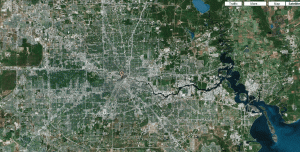Vodpod videos no longer available.
An MIT Grad student presents some really neat little computer “tiles” that sense each other and can be stacked and combined to tell stories, play music, and show pictures.

Vodpod videos no longer available.
An MIT Grad student presents some really neat little computer “tiles” that sense each other and can be stacked and combined to tell stories, play music, and show pictures.
Wired.com has this article about a project to reverse engineer the cognitive functions of the human brain.
Apparently, anything can be hacked:
 This is a road construction warning sign in the Boston area that was altered by someone with a little too much free time, and a working knowledge of the communication system of one of these signs. Or, maybe they just went to iHacked.com for advice.
This is a road construction warning sign in the Boston area that was altered by someone with a little too much free time, and a working knowledge of the communication system of one of these signs. Or, maybe they just went to iHacked.com for advice.
For my team’s Technology Briefing, we proposed to cover the Applications of GIS with regard to Oil Exploration. In light of that decision, I decided to look for information to education myself on the subject of GIS. From the GIS.com website: “GIS allows us to view, understand, question, interpret, and visualize data in many ways that reveal relationships, patterns, and trends in the form of maps, globes, reports, and charts. A GIS helps you answer questions and solve problems by looking at your data in a way that is quickly understood and easily shared. GIS technology can be integrated into any enterprise information system framework. A GIS is most often associated with a map. A map, however, is only one way you can work with geographic data in a GIS, and only one type of product generated by a GIS. A GIS can provide a great deal more problem-solving capabilities than using a simple mapping program or adding data to an online mapping tool.”
GIS is a rapidly developing technology which combines mapping applications, computer modeling, and geographic data to greatly enhance our ability to understand the world in which we live. It allows us to better map quanities, changes, densities, shifts, etc., in both populations and the geography of our world.

The capabilities of GIS are a far cry from the simple beginnings of computer cartography. At the simplest level, GIS can be thought of as a high-tech equivalent of a map. However, not only can paper maps be produced far quicker and more efficiently, the storage of data in an easily accessible digital format enables complex analysis and modeling not previously possible. The reach of GIS expands into all disciplines and has been used for such widely ranged problems as prioritizing sensitive species habitat to determining optimal real estate locations for new businesses.
The key word to this technology is Geography – this usually means that the data (or at least some proportion of the data) is spatial, in other words, data that is in some way referenced to locations on the earth. Coupled with this data is usually tabular data known as attribute data. Attribute data generally defined as additional information about each of the features, which can then be tied to spatial data. An example of this would be schools. The actual location of the schools is the spatial data. Additional data such as the school name, level of education taught, school capacity would make up the attribute data. It is the partnership of these two data types that enables GIS to be such an effective problem solving tool through spatial analysis.
For more information: GIS.com, GISLounge.com, OpenStreetMap, and of course Google Earth.
This is a facinating presentation, and the software used makes it very easily understood.
So, maybe the guys at TED aren’t so optimistic, after all…….
From Physorg.com: “ Four atomic quantum dots are coupled to form a “cell” for containing electrons. The cell is filled with just two electrons. Control charges are placed along a diagonal to direct the two electrons to reside at just two of the four quantum dots comprising the cell. This new level of control of electrons points to new computation schemes that require extremely low power to operate. Such a device is expected to require about 1,000 times less power and will be about 1,000 times smaller than today’s transistors.”
Four atomic quantum dots are coupled to form a “cell” for containing electrons. The cell is filled with just two electrons. Control charges are placed along a diagonal to direct the two electrons to reside at just two of the four quantum dots comprising the cell. This new level of control of electrons points to new computation schemes that require extremely low power to operate. Such a device is expected to require about 1,000 times less power and will be about 1,000 times smaller than today’s transistors.”
This article explains the development of new computer technology that uses material 2-10 nanometers wide to store information.
From the Singularity Institute for Artificial Intelligence website:
“The Singularity is the technological creation of smarter-than-human intelligence. There are several technologies that are often mentioned as heading in this direction. The most commonly mentioned is probably Artificial Intelligence, but there are others: direct brain-computer interfaces, biological augmentation of the brain, genetic engineering, ultra-high-resolution scans of the brain followed by computer emulation. Some of these technologies seem likely to arrive much earlier than the others, but there are nonetheless several independent technologies all heading in the direction of the Singularity – several different technologies which, if they reached a threshold level of sophistication, would enable the creation of smarter-than-human intelligence.”
Now this may seem like science fiction, but scientists and engineers around the world are working toward this level of asphisticaiton every day. Here is the Institute’s explaination of why its a good idea to advance technology beyond the level of human intelligence.
Scientists at the University of Maryland have developed a method of “Teleporting” the quantum state of an atom to another atom, unconnected and separated by about a meter. Using Moore’s law, how long before all information is able to be “beamed” instantaneously from point to point?
Green printer uses coffee dregs as ink
What will they think of next?